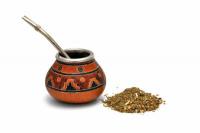Use reflective paints properly outdoors
Reflective colors are a way to warn of dangers outdoors. Use these to make your environment safer.
What is meant by reflective pigments
Under the name reflective paint, you are offered products that are able to reflect incident radiation in a targeted manner. A beam of light that hits the pigment is preferentially reflected in the direction from which the light comes.
The effect has the effect that an object that is provided with reflective paint or foil appears lighter than an object of the same brightness in a non-reflective color.
Fluorescent colors are also brighter than other colors because they convert UV light into visible light. Afterglow colors store light energy, which they emit as light in the dark. They are no brighter than other colors during the day. Both are not reflective colors.
In addition to products that reflect light, products that reflect infrared radiation have also been on the market for a number of years. These lower the surface temperatures, but you won't notice the fabrics optically.
Overview of different colors
The table shows various reflective and luminous products with their typical advantages and disadvantages.
Italy is one of the most popular holiday destinations in Europe and think of your ...
product |
advantage |
disadvantage |
|---|---|---|
Transparent, reflective sprays |
Invisible by day Reflect light back in a targeted manner. |
In daylight it is hardly possible to check the paint application. |
Colored, reflective sprays |
Color application can be checked well in daylight. Reflect light back in a targeted manner. |
Visible during the day, therefore not usable everywhere. |
Pigments that reflect infrared light. |
Prevent surfaces from heating up. |
Not possible to use with all colors. |
Reflective foils |
Easy to attach and easy to control in the light. Reflect light back in a targeted manner. |
Foils cannot be used everywhere. |
Daylight colors (neon colors, fluorescence) |
Enhance the signaling effect of colors during the day. Convert UV light into visible light. |
Have no effect at night. |
Afterglow colors |
Invisible by day Glow in the night. |
When there is light, it is hardly possible to check the color application. |
Using the color
Reflective paint only makes sense on the surface of objects for both daytime and noctilucent paints. Use these colors as the top layer. Painting over with colorless varnish protects the color from abrasion, but significantly reduces the effect.
Make sure the surface is grease-free and clean before applying the coatings. Vertical surfaces and areas that are protected from rain, as well as surfaces that no one walks on, are ideal. If you find that the colors aren't reflective or wear off after a short time, resort to transparencies.
In weatherproof foils and stickers, the pigments are usually incorporated into the top layer and do not come off the bandage. If you want to use the products outdoors, look out for a note on resistance to heat and moisture when buying.
Areas of application of the materials
The table lists various areas of application for using the reflective colors.
product |
Area of application |
annotation |
|---|---|---|
Reflective colors |
House numbers Marking on paths used Textiles such as safety vests, rainwear |
Only useful if light hits the surfaces from the direction of the observer. |
Daylight colors |
Warning signs Coating the edges of stairs Edges of terraces |
Mark areas that should be clearly visible in the light, no effect in the dark. |
Afterglow colors |
Edges of a pond Paths in the garden Stairs Signposts and warning signs in the garden |
As emergency lighting |
Heat reflective colors |
House walls to protect insulation material. Areas in the garden to protect them from heat. Parasols |
Protection against heat from IR radiation |
Reflective or bright colors are ideal for warning others of dangers and thus making life safer.


